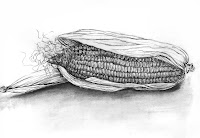Line
 Lines in drawing are the most basic element that is needed to create a shape, volume, tonal value or texture. Every beginner should learn how to draw with different lines and master the technique of line drawing early. It will make a big impact on the quality in their future work.
Lines in drawing are the most basic element that is needed to create a shape, volume, tonal value or texture. Every beginner should learn how to draw with different lines and master the technique of line drawing early. It will make a big impact on the quality in their future work.
Lines have the ability to explore, express and act. They are used to communicate information of a visual nature to a viewer. You can learn how to draw with different types of lines that can help you communicate different things. They can help you express your drawing exactly the way you want to.A line has certain properties that are a given. A line divides the picture-plane and always has direction. It has somewhere along its course, one or more values and is either consistent or varies in width. Lastly a line is always a certain length.
A line is a very versatile thing. To create a shape you have to use an outline and contour lines (There are also blind contour lines, which are achieved through looking only at the object while redrawing it and not looking at the paper while drawing). You know when you place your hand on a paper and you start tracing all around it? That is a form of an outline. But in order to create a detailed drawing, you will need to draw the contour lines. These contour lines are the nails, fold lines and so forth on your hand. Once you have a drawing with an outline and some contour lines, you have a line sketch.
But drawing with line does not just stop at outlines and contour lines. Did you know that master artists use different types of lines in their drawings to create mood in their drawings and express their work in certain ways. There are several different types of lines one can use in a drawing, like the diagrammatic line, structural line, calligraphic - and expressive line.
1. The diagrammatic line
The diagrammatic line is analytical and investigative. It clarifies the experience of spatial depth, dimension, shape, direction and structural nature of forms in space. These lines can measure distance, determine scale, move through forms and space and also show the environment in which the forms, subjects or objects are found. This is a line often used to connect forms in space and a fusion between form and space activates rhythm, energy and and activity to your drawing.2. The structural line
The structural line is very similar to the diagrammatic line but it still differs in some ways. It is focused on explaining volume to the audience through defining the directions and the shape that makes up a form.3. The calligraphic line
Calligraphic lines have strong rhythmic values and also have a powerful gestural line nature. They are versatile and one can play around with this line. They can bring to mind certain qualities of the subject to give a description thereof. A calligraphic line has a relational purpose and a expressive power.4. The expressive line
Every line has some expressive qualities, which leave a certain mark. Every artist has a different aesthetic attitude towards lines and so they express their work in different ways. How they use this line can contribute to a certain feeling or mood in a drawing. Lines are regarded as expressive when the artist's use of line has no other motive in his drawing than that of conveying his feelings or mood. Lines can bring an aesthetic beauty to your artwork. You should not limit yourself to thinking you should always add tonal value in your whole drawing. You can use a combination of line and tonal value or only line. Line is a very important element in a drawing and as you play around with it more, you will come to love it.
Lines can bring an aesthetic beauty to your artwork. You should not limit yourself to thinking you should always add tonal value in your whole drawing. You can use a combination of line and tonal value or only line. Line is a very important element in a drawing and as you play around with it more, you will come to love it.View page
No comments:
Post a Comment